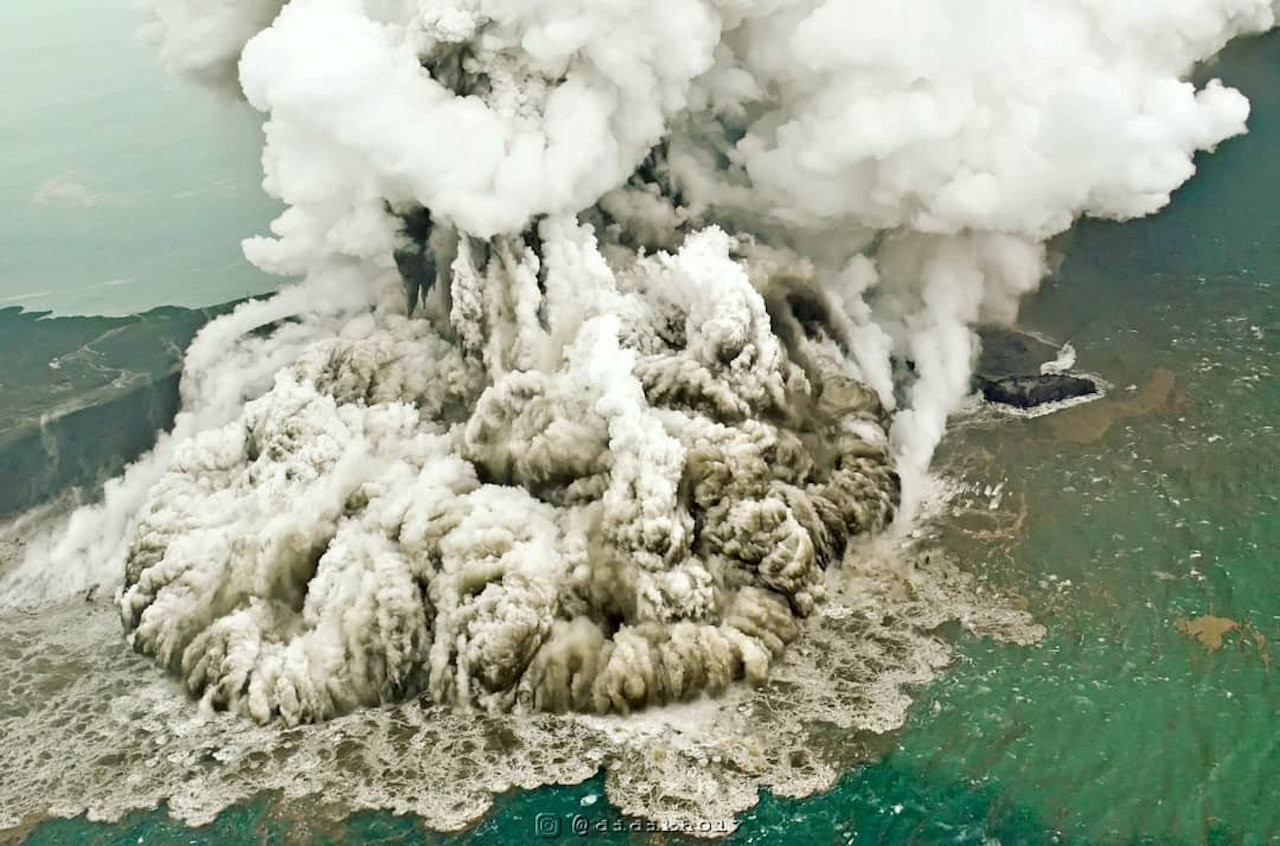Popular Reads
Top Results
Can't find what you're looking for?
View all search resultsPopular Reads
Top Results
Can't find what you're looking for?
View all search resultsAnak Krakatau's changing eruption pattern won't trigger tsunami: Agency
Anak Krakatau's volcanic activity has changed from Strombolian eruptions to the Surtseyan type, which can be more explosive.
Change text size
Gift Premium Articles
to Anyone
A
Early on Thursday, days after the volcano triggered a tsunami that killed at least 430 people on Saturday, authorities have raised the alert for Anak Krakatau to the second-highest level amid continuing eruptions followed by ash falling onto the nearby areas of Serang and Cilegon, Banten.
The Energy and Mineral Resources Ministry's Geology Agency reported that the volcanic activity had changed from the previous Strombolian eruptions--relatively mild explosive blasts of lava--to the Surtseyan type of eruption caused by the interaction of lava and water, which can be more explosive. Surtseyan eruptions typically occur in shallow seas or lakes.
In Strombolian eruptions, volcanic material was emitted from the top crater, while in Surtseyan eruptions, flowing magma colliding with water caused fragmentation that resulted in jets of fine-grained ash, said Antonius “Purbo” Ratdomopurbo, the secretary of the Geology Agency.
"There is a possibility that the [source of the eruption] is now close to the water," Purbo said, "The interaction when lava meets water will cause fragmentation; however, that only happens on the [water] surface, so how could such a process possibly trigger a tsunami?"
The fragmentation also created ash clouds engulfing the volcano, which the wind then blew to nearby areas, he said, adding that the authorities had taken samples of the ash to examine its composition.
People living in the areas affected by descending ash have been advised to wear face masks and eye protection outdoors.
Purbo said there was no way a Surtseyan eruption could cause another flank of Anak Krakatau to collapse. A collapsing flank is believed to have caused the tsunami, when a 64-hectare section of the volcano collapsed and caused a landslide large enough to generate massive waves that struck coastal towns in the Sunda Strait.
Anak Krakatau, meaning Child of Krakatau, emerged in 1927 from the remnants of the 1883 eruption of Mount Krakatau. The 90-year-old volcano has been particularly active since June, spewing volcanic material and sending clouds of ash up to 3,000 meters into the sky.
Indonesia's air traffic control agency, AirNav, issued a statement on Thursday rerouting all flights around the erupting volcano. "Due to the red alert over [Anak] Krakatau volcanic ash, all flights have been rerouted."
The Transportation Ministry has called on captains of ships passing the Sunda Strait to be careful and not to sail close to the volcano, which is located in the strait separating Java and Sumatra.
Authorities have expanded the danger zone to a 5-kilometer radius from the crater from the previous 2-km radius.
"The alert is raised in anticipation of a further escalation [of volcanic activity]," Purbo said. (swd)










